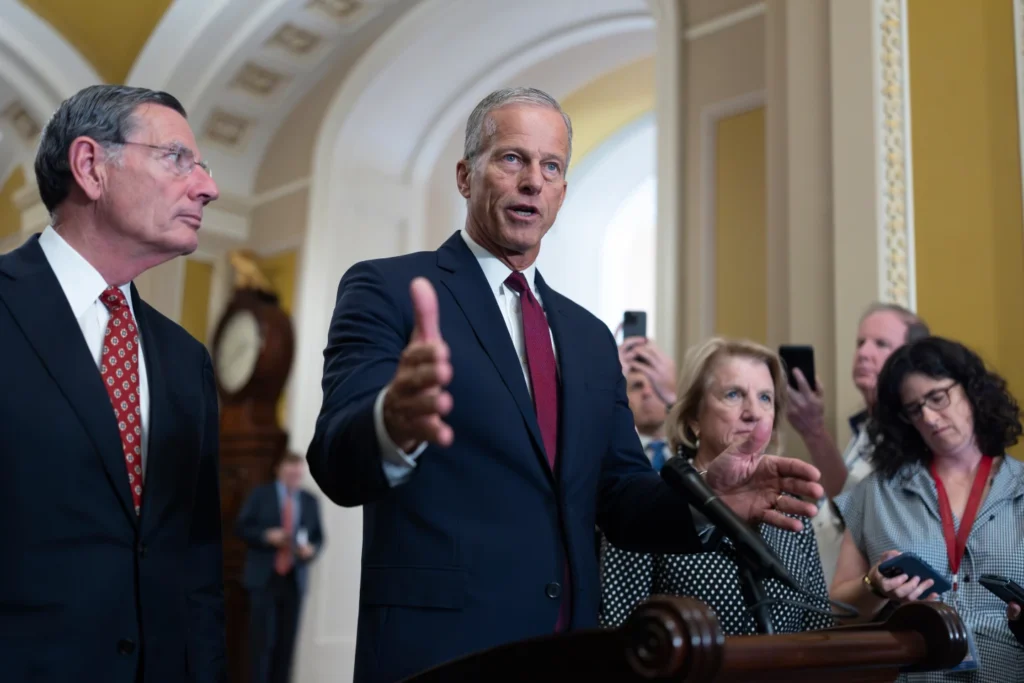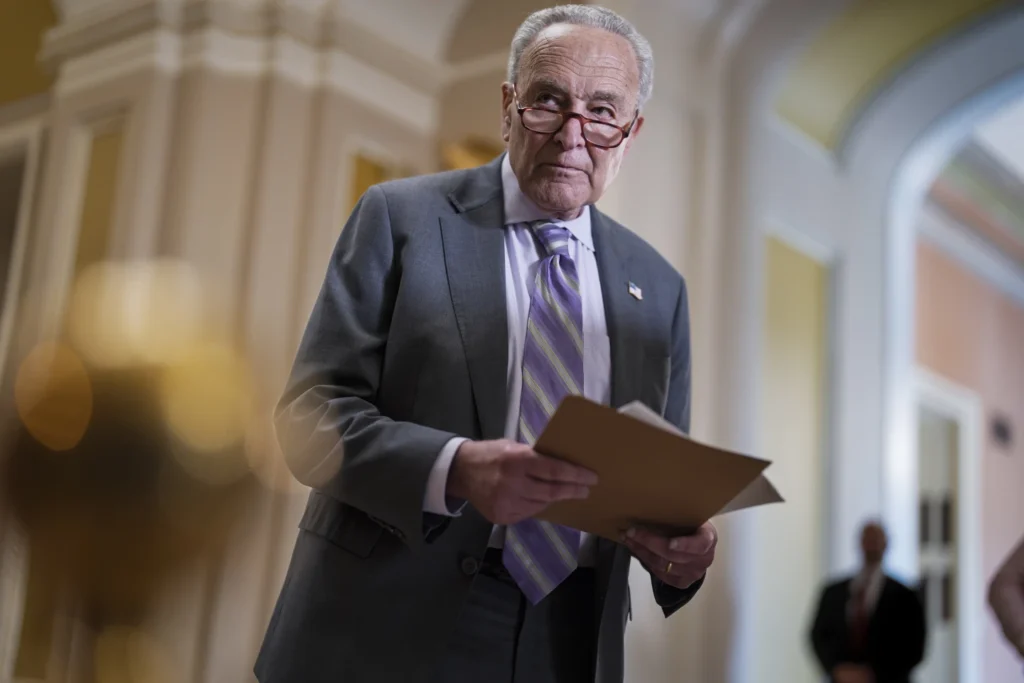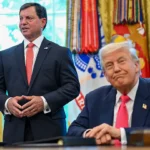Republicans, Democrats Brace for Fall Government Shutdown Battle/ Newslooks/ WASHINGTON/ J. Mansour/ Morning Edition/ With over two months left in the fiscal year, Congress is already entangled in partisan clashes over federal funding, raising the risk of a government shutdown. Republicans, now in control, aim to reshape spending priorities without bipartisan support. Democrats warn of deep cuts to health, education, and foreign aid as tensions rise.

Government Shutdown Threat + Quick Looks
- Shutdown threats emerge early, with fiscal year ending Sept. 30
- GOP aims to slash public broadcasting, foreign aid, and domestic programs
- Trump proposes reallocating funding to defense, border security
- House passed 2 of 12 appropriations bills, Senate none yet
- Senate to begin with easier bills like military and veterans funding
- Schumer urges bipartisan process, warns of partisan impasse
- Progressive Democrats furious over earlier compromises on stopgap funding
- Trump administration blamed for delaying approved spending
- Republicans insist Democrats want shutdown to stall agenda
- OMB Director Vought says appropriations “must be less bipartisan”

Deep Look: Congress Clashes Early Over Funding as Government Shutdown Looms
WASHINGTON (AP) — With more than two months remaining in the fiscal year, talk of a potential government shutdown has already engulfed Capitol Hill. The early partisan sniping underscores how fraught this fall’s budget fight could be, with a Republican-controlled Congress pushing to impose sweeping funding changes largely without Democratic support.
Unlike in previous years when shutdown threats intensified in late September, 2025’s political brinkmanship is in full swing by late July — a sign that the divisions this time run deeper, especially with President Donald Trump’s administration seeking major reallocations of federal funds.
A Clash of Agendas
The federal government is currently operating under a full-year continuing resolution (CR), maintaining approximately $1.7 trillion in funding across defense and non-defense programs. That expires on September 30, setting the stage for a legislative race to avoid a shutdown.
Trump has proposed a comparable topline figure for next year’s budget, but with radically different priorities: significantly increased defense and border spending, and substantial cuts to education, healthcare, housing, and foreign aid.
Progress Halts in Congress
So far, the House has passed just two of the 12 annual appropriations bills, largely along party lines. The Senate has yet to pass any full bills, though several have cleared the Senate Appropriations Committee with bipartisan support. The Senate is expected to vote soon on the military construction and Veterans Affairs funding bill, typically the easiest to pass.
But with Republicans having focused much of their attention on Trump’s tax and spending cut package, the legislative calendar is compressed — and a short-term stopgap bill to keep the government open past September appears all but inevitable.
Democrats Push Back
Democrats, although in the minority, still hold power in the Senate through the filibuster rule, which requires 60 votes to pass most legislation. Democratic leaders like Senate Majority Leader Chuck Schumer are pushing for a bipartisan, bicameral solution, even as they avoid setting firm red lines publicly.
“We are for a bipartisan, bicameral bill. That’s what always has been done,” Schumer said after closed-door meetings with appropriators. “The onus is on Republicans to help us make that happen.”
But progressive Democrats remain furious over prior compromises. Earlier this year, several Democrats reluctantly voted to advance the current CR to prevent a shutdown, only to see Trump’s administration delay billions in approved spending and unilaterally cancel $9 billion in public broadcasting and foreign aid.
Sen. Adam Schiff (D-CA) warned against enabling Trump’s agenda again, stating, “If we pass this continuing resolution for the next half year, we will own what the president does. I am not willing to take ownership of that.”
Republicans Prepare for the Blame Game
Republicans now control the House, Senate, and White House, complicating their usual strategy of blaming Democrats for budget impasses. Still, GOP leaders argue Democrats are attempting to sabotage their policy agenda by walking away from appropriations talks.
Senate GOP leaders like John Thune and John Barrasso claim that Schumer has disrupted past appropriations by skipping traditional committee work in favor of backroom deals. Barrasso warned Democrats not to obstruct the process again, saying they “will be the ones sabotaging the Senate and shutting down the government.”
The GOP is expected to press forward with votes on all 12 bills, even if they have little hope of passing in the Senate as written.
Bipartisanship on Life Support
Trump’s Director of the Office of Management and Budget, Russ Vought, added fuel to the fire, stating the appropriations process “has to be less bipartisan.” That statement has further alarmed Democrats, who see it as evidence that the Trump administration is actively trying to erode cooperation and reshape the budget process along ideological lines.
Meanwhile, many Democrats question whether appropriations even matter if the administration can slash previously agreed-upon funding through rescissions and bureaucratic slow-walking.
“At this point in time, why have appropriations if they can just unilaterally through rescissions whack it all away?” asked Rep. Mike Quigley (D-IL). “I think what you’re seeing is more frustration than I’ve ever witnessed.”
What Happens Next?
While most lawmakers agree a stop-gap measure will be necessary to keep the government running past September 30, the political path forward remains murky. With deep ideological divides, election-year pressures, and Trump’s ambitious reshaping of government spending, even a short-term deal could be difficult to reach.
Unless compromise emerges soon, a shutdown in October appears increasingly possible.







